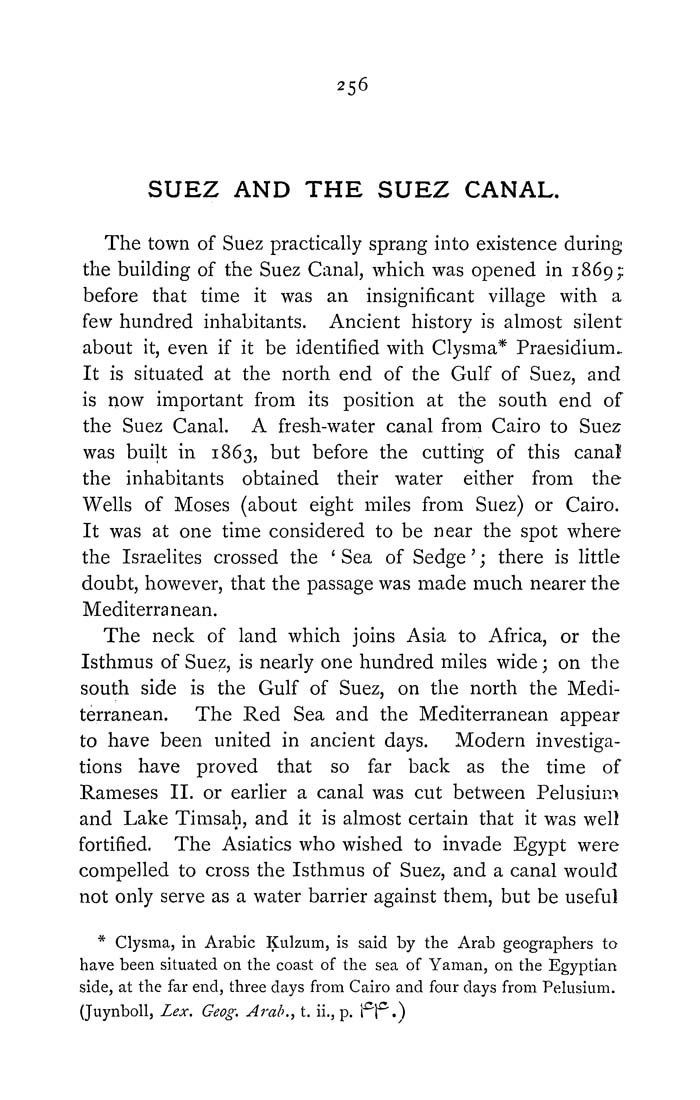256
SUEZ AND THE SUEZ CANAL.
The town of Suez practically sprang into existence during
the building of the Suez Canal, which was opened in 1869;
before that time it was an insignificant village with a
few hundred inhabitants. Ancient history is almost silent
about it, even if it be identified with Clysma* Praesidium.
It is situated at the north end of the Gulf of Suez, and
is now important from its position at the south end of
the Suez Canal. A fresh-water canal from Cairo to Suez
was built in 1863, but before the cutting of this canal
the inhabitants obtained their water either from the
Wells of Moses (about eight miles from Suez) or Cairo.
It was at one time considered to be near the spot where
the Israelites crossed the ' Sea of Sedge'; there is little
doubt, however, that the passage was made much nearer the
Mediterranean.
The neck of land which joins Asia to Africa, or the
Isthmus of Suez, is nearly one hundred miles wide; on the
south side is the Gulf of Suez, on the north the Medi¬
terranean. The Red Sea and the Mediterranean appear
to have been united in ancient days. Modern investiga¬
tions have proved that so far back as the time of
Rameses II. or earlier a canal was cut between Pelusium
and Lake Timsah, and it is almost certain that it w^as well
fortified. The Asiatics who wished to invade Egypt were
compelled to cross the Isthmus of Suez, and a canal would
not only serve as a water barrier against them, but be useful
* Clysma, in Arabic Kulzum, is said by the Arab geographers to
have been situated on the coast of the sea of Yaman, on the Egyptian
side, at the far end, three days from Cairo and four days from Pelusium.
(JuynboU, Lex. Geog. Arab., t. ii., p. Pp.)
|








